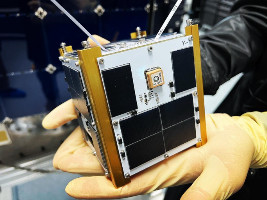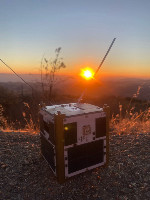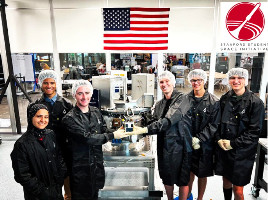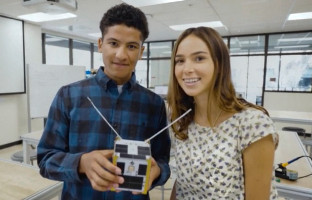| Satellite | Pleiades - Sapling Sempervirens (Sapling-1) |
|---|---|
| Spacecraft type | CubeSat |
| Units or mass | 1U |
| Status | Deployment failure (Launcher Orbiter SN1 was not able to generate power and spacecraft were not deployed. TinyGS packets must be false-positive.) |
| Launched | 2023-01-03 |
| NORAD ID | 55059? |
| Deployer | ? |
| Launcher | Falcon 9 (Transporter-6) (Launcher Orbiter) |
| Organisation | Stanford University |
| Institution | University |
| Entity type | Academic / Education |
| Country | US |
| Partners | Stanford Student Space Initiative (SSI), Bronco Space |
| Oneliner |
Demonstrate CubeSat bus, intersatellite links and perform radio amateur mission. |
| Description |
First mission is to prove critical subsystems of the Sapling CubeSat Bus. The Sapling project is entirely open source and developed by members of the Stanford Student Space Initiative, a primarily undergraduate volunteer student engineering organization at Stanford University. The second objective is a demonstration of the broader Pleiades Swarm Initiative, which exists to develop and demonstrate distributed spacecraft technology. This initial demonstration will demonstrate satellite-to-satellite and satellite-to-satellite-to-ground relays. Depending on final orbital parameters, the ultimate goal will be a ground-to-satellite-to-satellite-to-ground link between a station operated by students at Bronco Space at Cal Poly Pomona, and a station operated by students at Student Space Initiative at Stanford. The radio-networking demonstration of this mission is a collaboration between student groups who wish to use a network of satellites to send simple messages between two universities, and then build upon this experience to build a more complex radio networking swarm of satellites. The hardware tested and software developed by this networking demonstration may enable amateur satellites to achieve over the horizon radio relays without requiring a medium or high Earth orbit relay node. The mission will continue to demonstrate the effectiveness of LoRa for spacecraft telemetry and command. Amateur operators and satellite hobbyists may use this information to build their own CubeSats, or because all spacecraft built for this project are open source, they may directly replicate the Sapling spacecraft to act as a known foundation for their own missions. If the radio networking demonstration is successful, amateurs using the correct LoRa modulation and packet structures could conceivably relay their own packets through the network when it is not actively in use by Cal Poly or Stanford operators. As with all amateur satellite missions, the prospect of catching a telemetry packet will inspire other students around the world to pursue radio communications and other satellite possibilities of their own imagination. |
| Notes |
Sapling-1 IARU request has been superseded by the Pleiades mission request. |
| Sources | [1] [2] [3] [4] [5] |
| Photo sources | [1] [2] [3] |
| Keywords | Open-source |
| On the same launch |
|
Last modified: 2024-12-18




